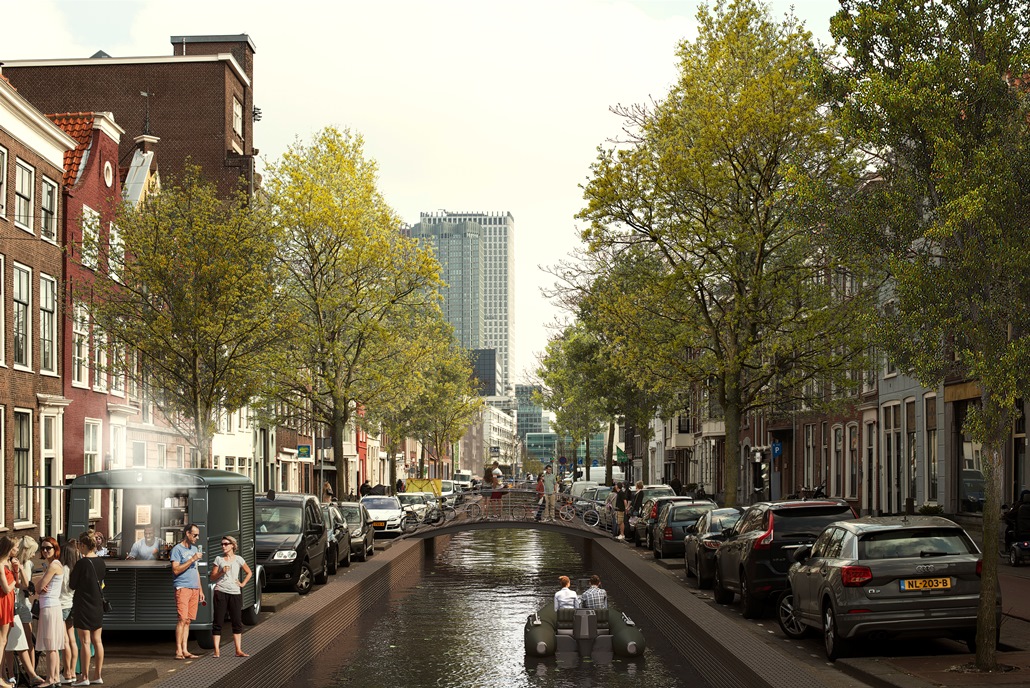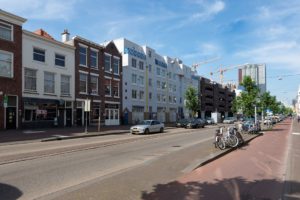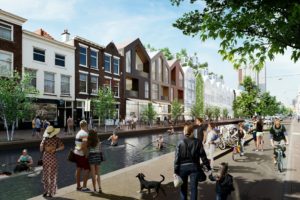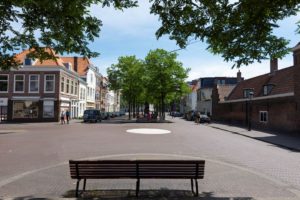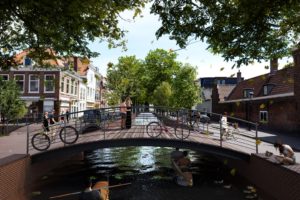On September 19, 2019, Rotterdam-based design and redevelopment firm MVRDV—together with local neighborhood organizations—presented a revitalizing plan to the city of The Hague, Netherlands.
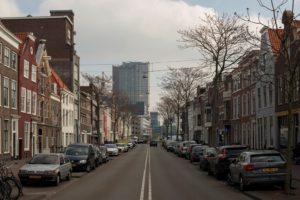
This is what Amsterdamse-Veerkade currently looks like. A rendering of what it could look like appears above as the featured image.
It proposes to reopen the city’s 17th-century canals, which were filled-in during the 20th century.
The restoration of these historic waterways would help reconnect and beautify the city, while adding resilience in the form of green infrastructure.
The neighborhood participation project aims to revive a run-down part of the historic centre of the government seat of the Netherlands.
The vision, produced by MVRDV as a pro-bono project in collaboration with the various residents’ collectives, aims to improve the sustainability, economy, traffic, and water management of the area.
In contrast to other Dutch cities, trade relying on the city’s central canal network was never the main focus of The Hague, which was founded as a government centre.
Consequently, many of the canals were filled between 1910 and 1970 and, in the 1970s, part of the neighborhood was almost demolished to make way for a motorway.Citizens took action against their urban planners, and stopped the demolition process, but not before significant damage was done to the once-pristine canal area.
Recent years have seen a revival in community action. In 2018, a neighbourhood initiative demanded the closure of two red light district streets, which the city agreed upon and, boosted by this success, the inhabitants set the next goal: to reopen the lost canals and boost the area both ecologically and economically.
One of the driving forces behind the vision is local resident Shireen Poyck, who united the various neighbourhood initiatives and stakeholders in the “Grachten Open” (Canals Open) initiative and, in 2018, called on her neighbor, MVRDV Partner Jan Knikker, to participate. MVRDV drew up a vision to reopen the canals, building upon the work of the inhabitants.
Based on a study of the historical canals by local firm BAU architects, MVRDV envisions the restoration of the main canals, and has drawn up plans for the minor canals which are either dead-ends or lost due to underground works or buildings.
Each of these canal stubs needs to function as an urban activator, with proposals including swimming canals, koi carp canals, and even a surf canal which would actively support the ambition of The Hague as a sport city.
MVRDV’s vision combines the canals with the “Spinoza Power 2.0” vision, which was created by the local community and includes a gastronomy route, the removal and renovation of the red light district streets, and a new market hall which replaces an under-performing parking garage.
“All over the world, neighbourhoods like the old centre of The Hague form the backbone of tourism and provide an identity to a city, but in The Hague somehow this ancient and incredibly charming area was forgotten,” says Winy Maas, architect and co-founder of MVRDV. “The area offers the unique chance for an urban regeneration that will improve the local economy and make a leap forward in the city’s energy transition.”
Special attention has been given to challenges such as tram lines and other infrastructure erected on the spaces which used to be canals.
Like many other Dutch cities, The Hague already has some experience in bringing back its canals, restoring a small piece of canal and transforming parking space into a combination of parking, open water, and gastronomy. But overspending on this project caused by a complex underground car-park encouraged MVRDV and the local community to keep their plans simple and realistic.
The Open Canal vision was drafted by local inhabitants and local businesses, supported by the Oude Centrum and Rond het Plein neighborhood communities, businesses, SOS Den Haag and two major real estate owners in the area.
It was generously supported by Grachten Open and Wijkorganisatie Oude Centrum and was presented in the city hall to alderman Boudewijn Revis.
The Open Canal Vision is the third project in which MVRDV has participated on a non-profit basis with local communities. Also ongoing are a project to renovate an open sewer in New Delhi and an energy transition project for the Hoogkwartier in Rotterdam which also includes a mobility challenge.
All images are courtesy of MVRDV.
See MVRDV website.

